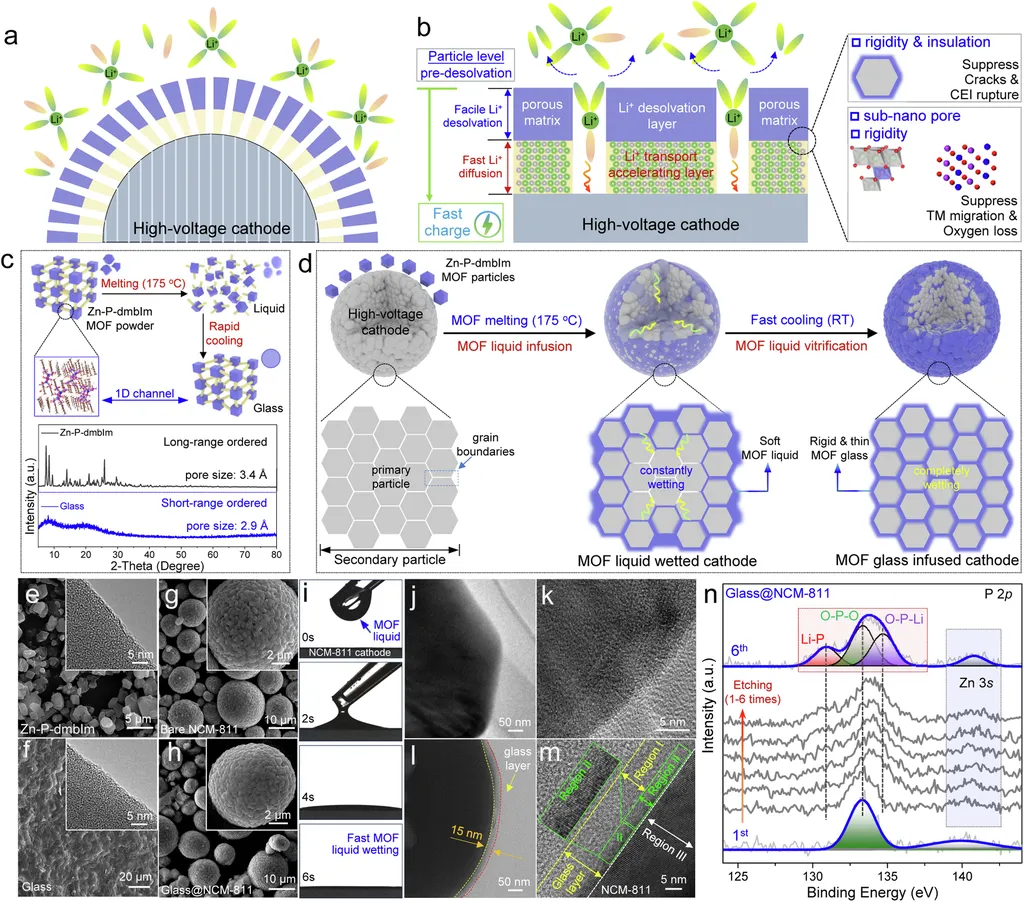In the relentless pursuit of enhancing lithium-ion battery (LIB) technology, researchers have turned to an unconventional ally: metal-organic frameworks (MOFs). A recent study published in *Materials Futures* (translated as *Materials Horizons*) explores the promising role of MOFs in revolutionizing LIB cathode materials, potentially reshaping the energy sector’s landscape.
Lianfen Chen, a leading researcher from the Guangdong Provincial Key Laboratory of Eco-Environmental Studies and Low-Carbon Agriculture in Peri-Urban Areas at Zhaoqing University, has been at the forefront of this innovative approach. The study categorizes prevailing LIB cathode materials based on their structures and working mechanisms, shedding light on the inherent limitations that have long plagued the industry—structural vulnerability, limited capacity, sluggish ion/electron transport, and poor environmental endurance.
Chen’s research highlights the advantages of using MOFs as self-sacrificial templates for the directional fabrication of LIB cathodes. “MOFs offer structural and compositional adjustability, along with affluent electrochemical active sites,” Chen explains. This flexibility allows for multiscale modifications that can significantly improve key parameters such as specific capacity, electrical/ion conductivity, cell voltage, cycling stability, and power/energy density.
The study evaluates and compares the electrochemical properties of various MOF-derived LIB cathodes, embodying their structure-activity correlation. The findings suggest that MOF-mediated synthesis methods could overcome the limitations of conventional synthetic routes, paving the way for more efficient and durable LIB cathodes.
The implications for the energy sector are profound. As the world increasingly relies on LIBs for everything from electric vehicles to renewable energy storage, the need for advanced cathode materials becomes ever more critical. Chen’s research offers a glimpse into a future where MOF-derived cathodes could enhance the overall electrochemical performance of LIBs, potentially leading to longer-lasting, more efficient batteries.
“Our work not only addresses the current challenges in LIB technology but also opens up new avenues for future innovation,” Chen notes. The study provides an outlook on the challenges and potential future development directions of MOF-derived LIB cathodes, guiding the industry towards technological advancements that could redefine energy storage solutions.
As the research community continues to explore the potential of MOFs, the energy sector stands on the brink of a transformative era. The insights from Chen’s study, published in *Materials Futures*, could very well shape the future of LIB technology, driving the energy sector towards a more sustainable and efficient future.

